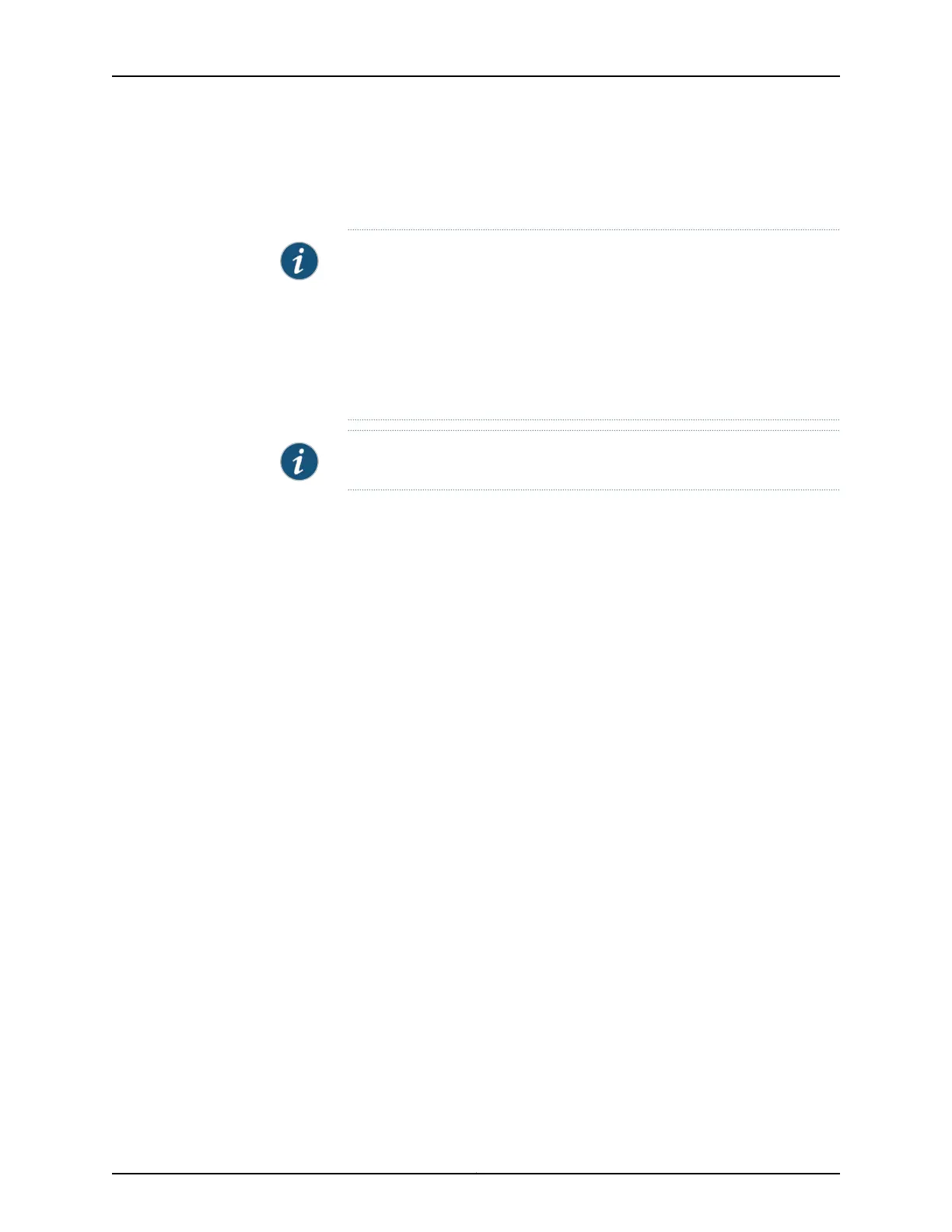NAT is described in RFC 1631 to solve IP (version 4) address depletion problems. NAT
has been found to be a useful tool for firewalls, traffic redirect, load sharing, network
migrations, and so on.
NOTE: In ACX Series routers, NAT is supported only on the ACX1100
AC-powered router and ACX500 routers for inline NAT and inline IPsec
services. ACX1100 AC-powered router supports only source NAT for IPv4
packets. Static and dynamic NAT types are currently not supported. Service
chaining (GRE, NAT, and IPSec) on ACX1100-AC and ACX500 routers is not
supported.
A license is required for enabling inline services on ACX500 routers.
NOTE: ACX5048 and ACX5096 routers do not support NAT configurations.
Source NAT is the translation of the source IP address of a packet leaving the router.
Source NAT is used to allow hosts with private IP addresses to access a public network.
Source NAT allows connections to be initiated only for outgoing network connections—for
example, from a private network to the Internet. Source NAT is commonly used to:
•
Translate a single IP address to another address (for example, to provide a single
device in a private network with access to the Internet).
•
Translate a contiguous block of addresses to another block of addresses of the same
size.
•
Translate a contiguous block of addresses to another block of addresses of smaller
size.
•
Translate a contiguous block of addresses to a single IP address or a smaller block of
addresses using port translation.
•
Translate a contiguous block of addresses to the address of the egress interface.
Related
Documentation
Network Address Port Translation Overview on page 1001•
• Enabling Inline Services Interface on ACX Series on page 1008
• Understanding Service Sets on page 1028
• Service Filters in ACX Series on page 1035
• Guidelines for Applying Service Filters on page 1036
• Service Filter Match Conditions for IPv4 Traffic on page 1038
• Service Filter Actions on page 1039
• Network Address Translation Address Overload in ACX Series on page 1001
• CoS for NAT Services on ACX Series Universal Access Routers on page 887
Copyright © 2017, Juniper Networks, Inc.1000
ACX Series Universal Access Router Configuration Guide

